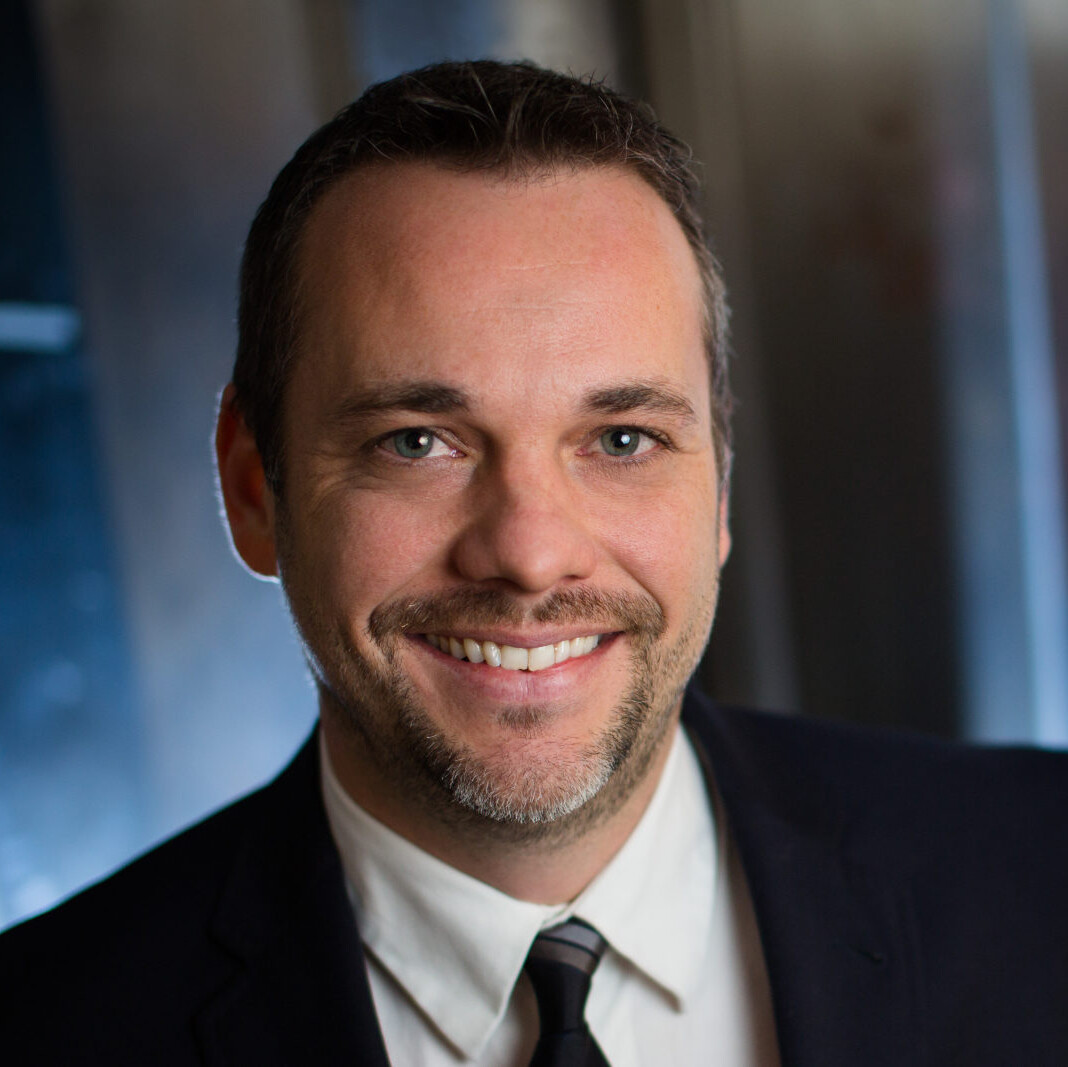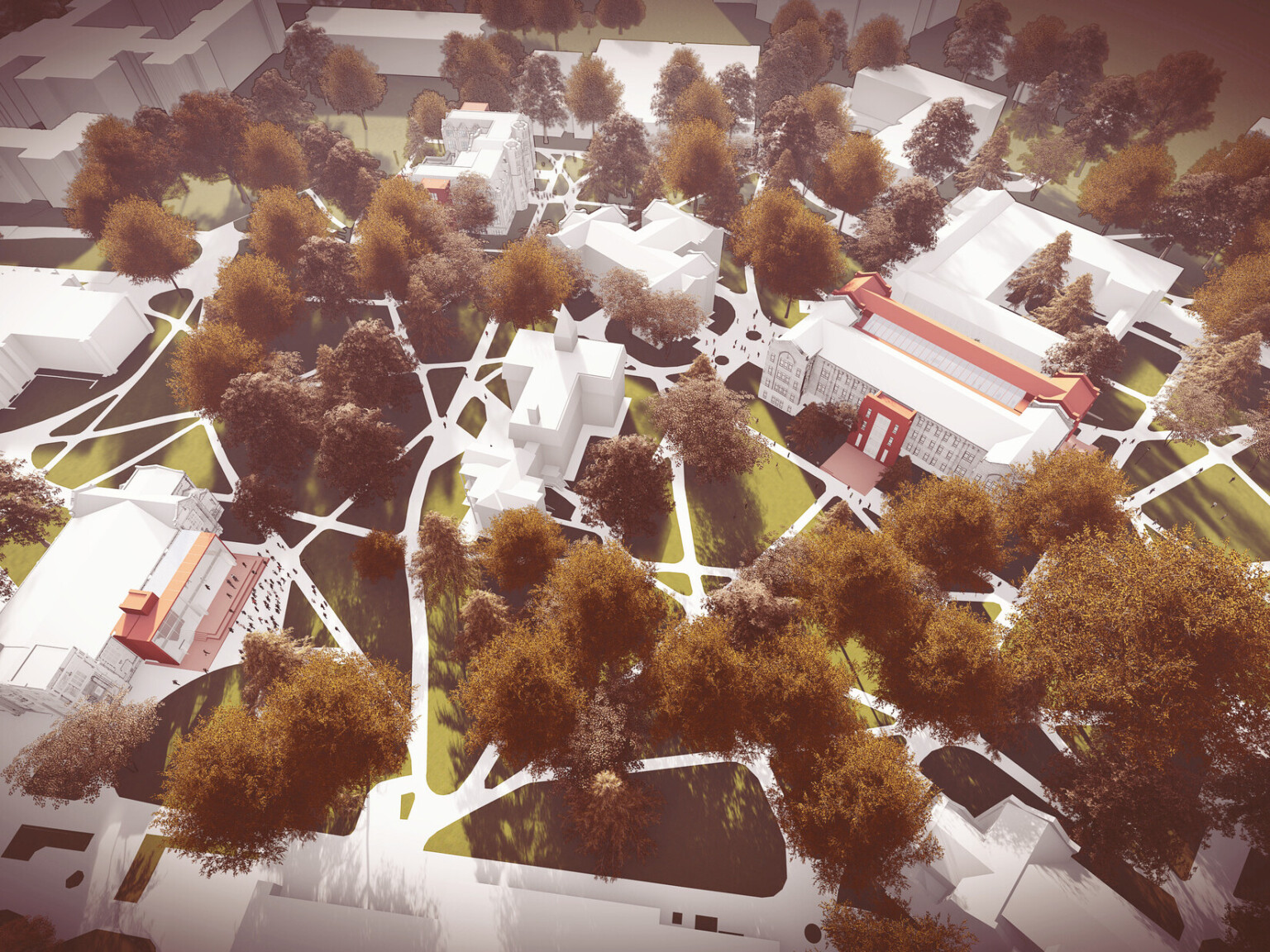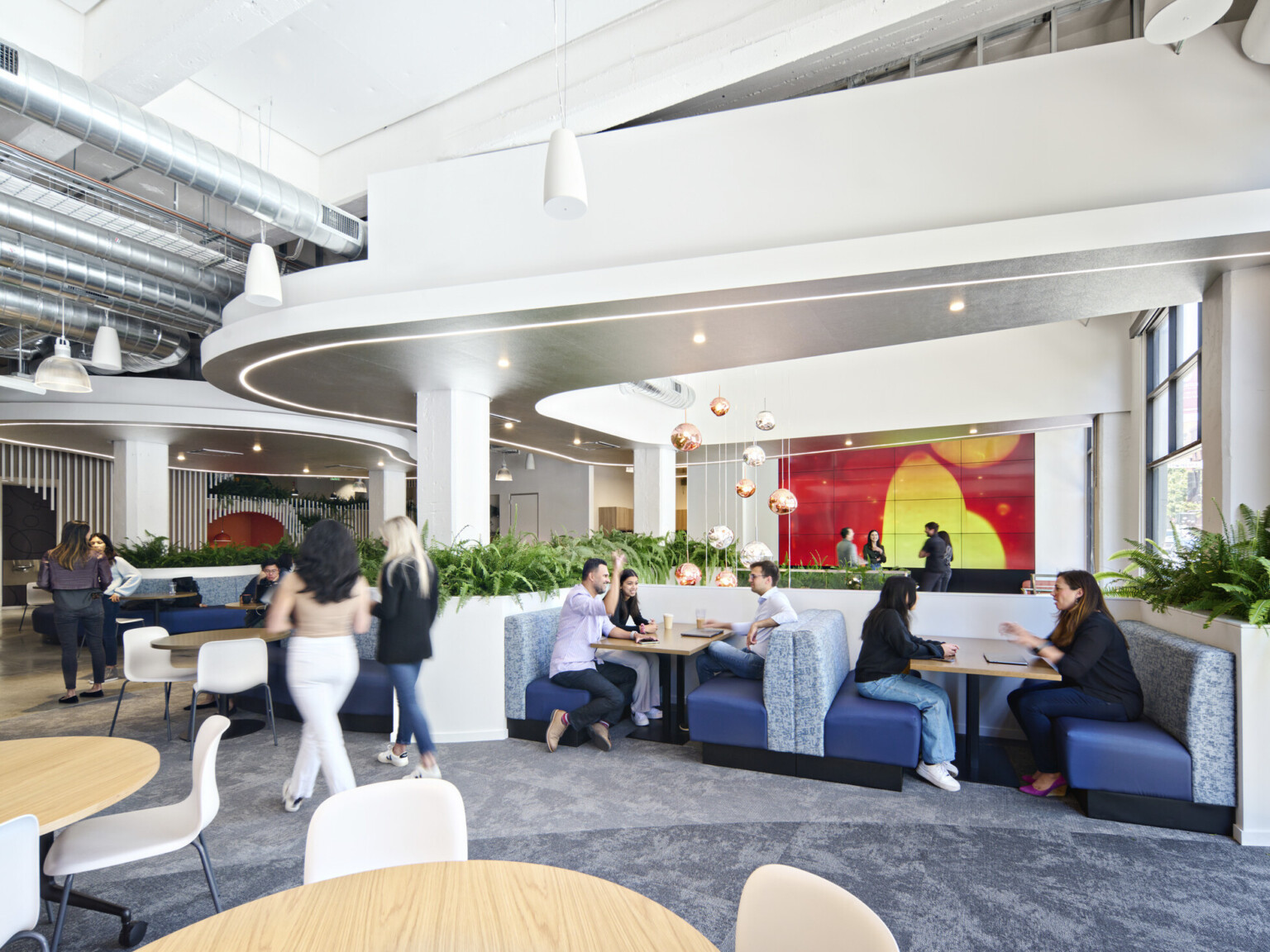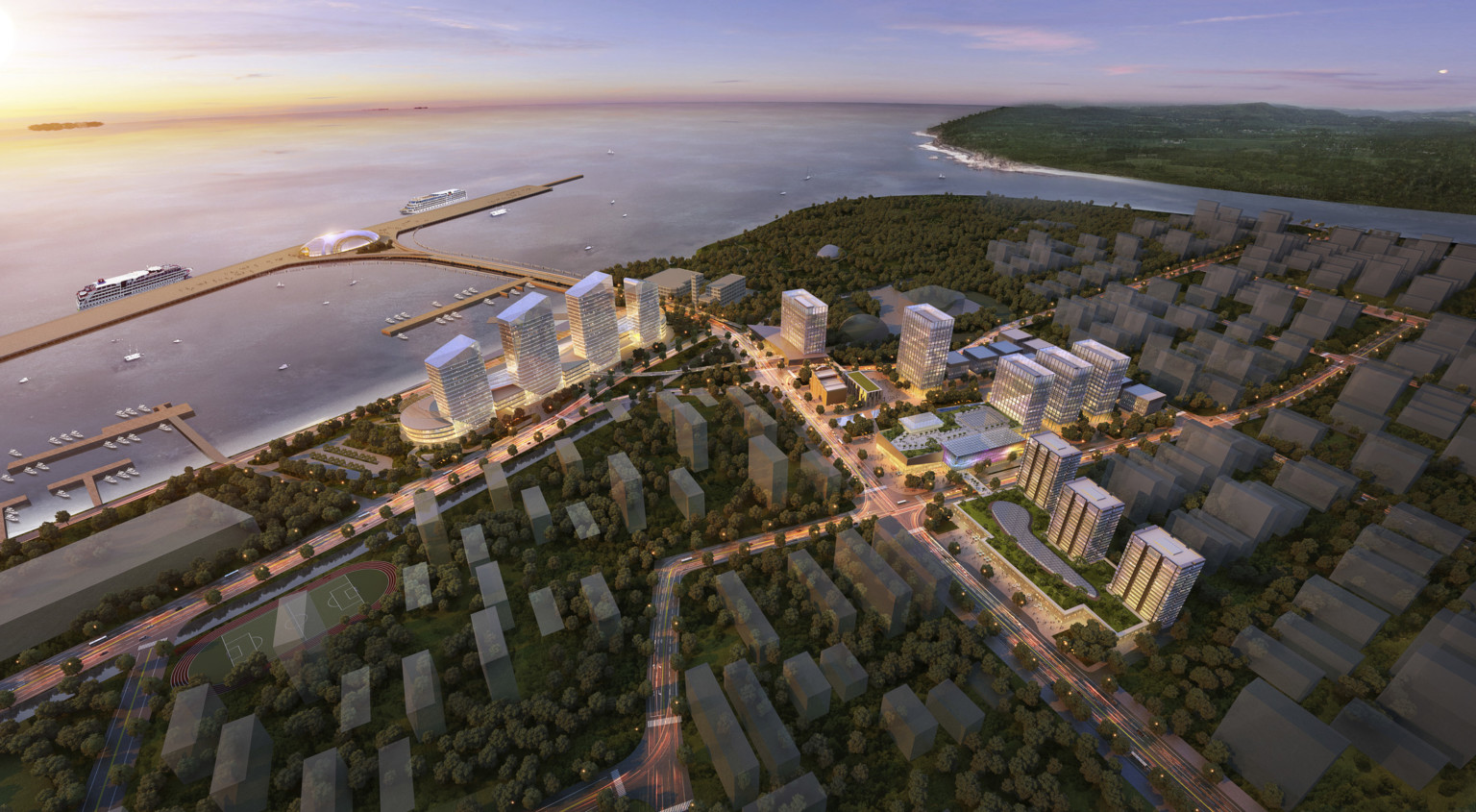
A Provocation for the Future of Learning
The pandemic may be known as the tipping point that forced school districts around the world to abruptly embrace and employ online learning. For decades, our designers have challenged the industrialized model of education by proposing new concepts and design ideas that take learning outside the standard four-walled classroom and expand it to maker spaces, collaboration hubs, hands-on labs, and virtual experiences. Over the past few years some school districts welcomed this new approach to learning, while others were slower to adopt and implement change.
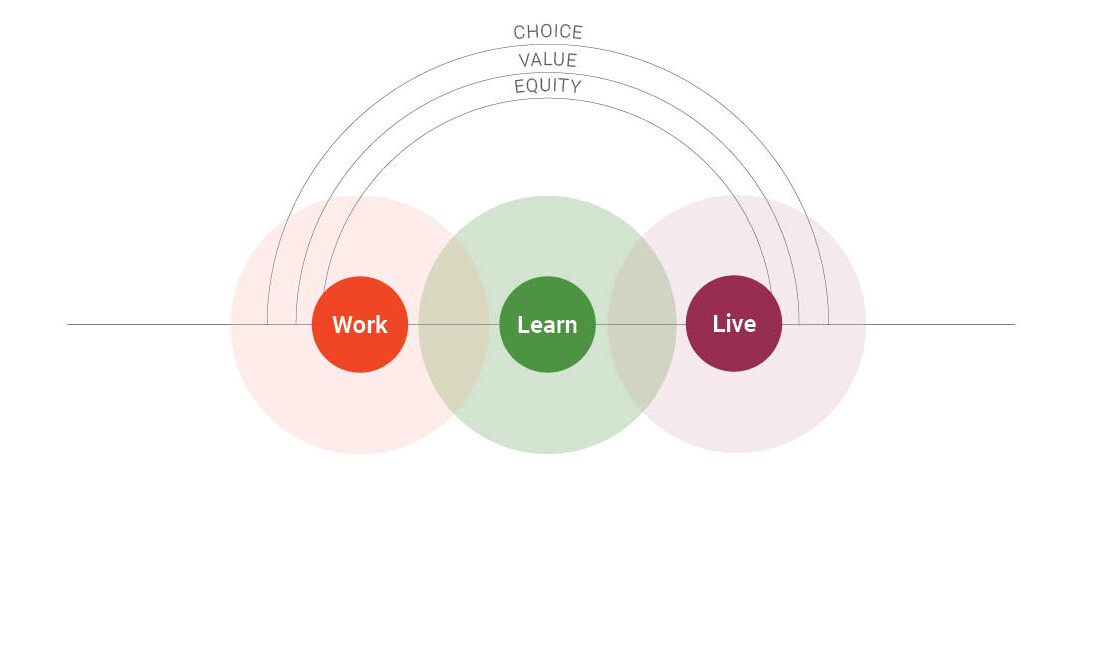
Redefining the Student Experience
With a renewed focus on remote instruction due to the pandemic, now is the ideal time to explore ways to transform education and meet the needs of today’s learners. The opportunity is ripe for school districts and communities to align and re-imagine how they deliver instruction through a variety of in-person and virtual experiences.
Prior to formalizing this provocation, we conducted personal surveys of school leaders, educators, students, and parents to gain a better understanding of their mindset regarding the future of education. We asked survey participants to dream big and imagine how the pandemic could be a catalyst for positive change. We heard overwhelmingly that flexibility in both the learning environment and the learning experience is essential in a post-COVID-19 world. We also heard that experiential learning is the preferred model moving forward, whether that’s online, in a physical space, or a combination of both options. Many of our discussions during the survey also revolved around the use of technology to allow learning to occur anytime and anywhere.
A Community-Based Learning Model
Looking ahead, I challenge school districts, community members, and designers to resist reactionary solutions and consider how this moment in time is an opportunity to fundamentally re-envision the student experience and build on a community-based learning model that is personalized, equitable, and breaks down silos. Think about how schools duplicate many of the amenities already offered in facilities across communities, such as libraries, community centers, parks and recreation, fitness clubs, commercial facilities, and workplaces. Now envision a new approach to learning that breaks down barriers, becomes more efficient, provides real-world experiences, and eliminates redundancies. In lieu of providing designated spaces inside schools for learning that can be effectively delivered online or within existing community amenities, what if we re-think the school as place for experimentation, application, socialization, and support? What if we embrace and leverage our community infrastructure? Are we now faced with an opportunity that gives students the ability to engage in these services scattered throughout their neighborhoods?
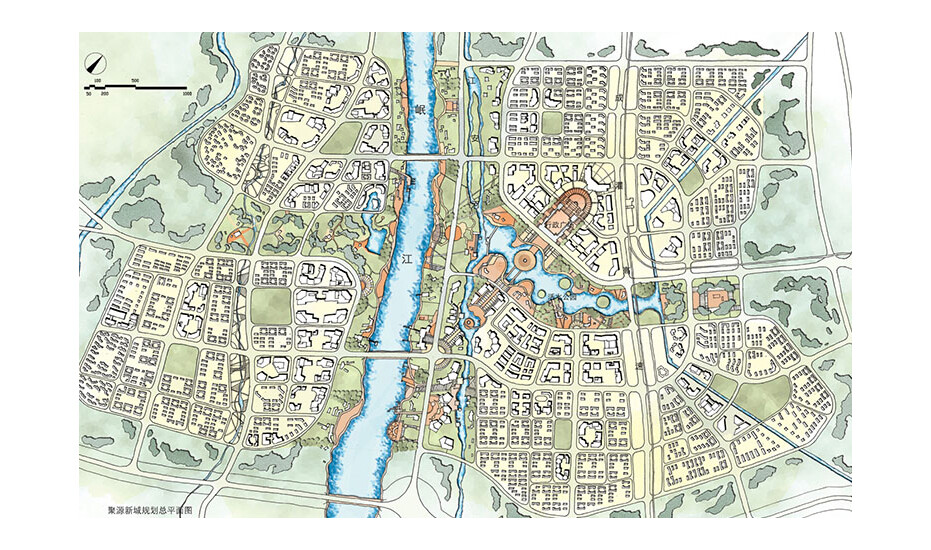
This model would allow communities to experience synergies as students moved in and between public spaces, and could ultimately decrease the amount of school building inventory operated and maintained by school districts and funded by taxpayers. Some examples are outlined below:
- Students would access the community library for media and resources needed to complete a project.
- Students would participate in physical fitness programs, and athletes would prepare for competition in fitness centers or athletic clubs.
- Learners of all ages could participate in group activities at community centers.
- Learners would have access to expanded and advanced curriculum at higher education institutions.
- Coffee shops could serve as a third place for collaborative learning.
- Schools, as they are defined in the traditional sense, could be re-imagined as community learning hubs with amenities to support active, collaborative, and applied learning.
This community-based approach allows school districts to shift the dialogue and define an educational experience that is built on co-creation and collaboration in meaningful ways. It allows students to think deeply in a complex, dynamic, and highly connected learning network. Collectively, school districts, communities, and designers could identify the types of behaviors learners need to master for future success – soft skills like problem solving, creative thinking, and teamwork – and align those behaviors with appropriate environments across the community.
This provocation is just that; a thought-provoking idea to bring school districts and communities closer together to serve their patrons. Let’s capitalize on the attention the education industry is receiving during this pandemic to transform the future of learning. This is undoubtedly a monumental undertaking that will take a systematic shift with the holistic support of communities, partners, school leaders, and others to succeed. Now, more than ever, we believe that communities are open and eager to envision a new and better model for learning. Together, we have an opportunity to make a difference and define what the future of education holds. Who’s with me?
